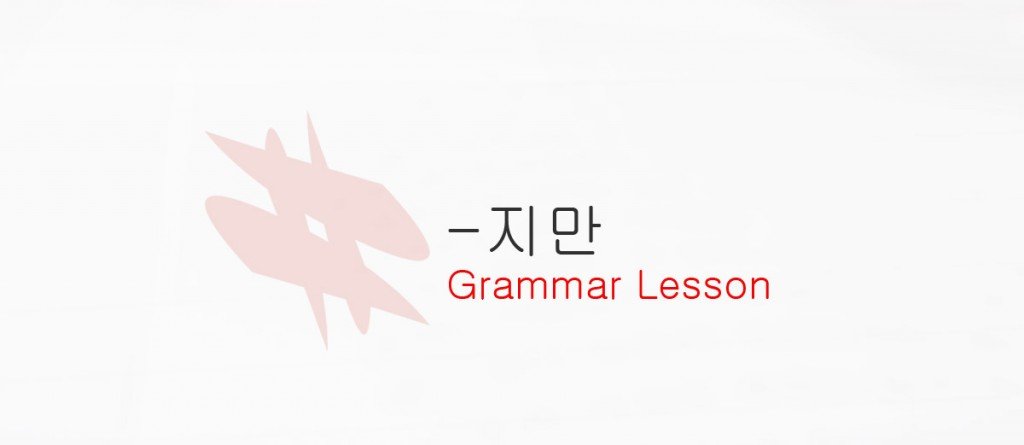– 지만 Grammar Lesson – “but” in Korean

– 지만 Grammar Explanation
In Korean, the – 지만 grammar pattern is used to express the word “but” and to mark contrast between two clauses. Thankfully it only comes in one shape which means that we simply attach it to a verb stem without having to worry about conjugation rules and just like that, we can make sentences such as:
축구는 좋지만 야구는 싫어요.
= I like soccer but I don’t like baseball.
Usage
| VST + 지만 | General conjugation/Present tense |
| VST + 았지만/었지만/였지만 | Past tense |
| VST + 겠지만 | Future tense |
| Noun + 이지만 | Nouns (to be) |
| Noun + 이었지만 | Nouns in Past tense (was) |
- VST means verb stem and includes both adjectives (Descriptive Verbs) and verbs (Action Verbs)
- 가다 -> 가지만 – “go, but…”
- 오겠다 -> 오겠지만 “will come, but…”
- 먹었다 -> 먹었지만 “ate, but…”
- 예쁘다 -> 예쁘지만 “pretty, but…”
- 슬프다-> 슬프지만 “sad, but…”
- 형이다 -> 형이지만 “it is my brother, but…”
A Closer Look
It might not be obvious at first glance, but this pattern actually has two usages that are very similar to each other.
- In the first usage, we just express contrast. For example: “I like this, but not that.”
- In the second usage however, we recognize a fact in the preceding clause but highlights its unimportance in comparison to the second clause. We can make sentences such as: “I dislike it but I still have to do it” or “he’s smart but he can never figure it out“
Different subjects? Don’t forget the topic marker!
This is very important! If the subjects of the two clauses are not the same, you must use the topic marker 은/는 on both to highlight the contrast between the subjects in the two clauses.
저는 매운 음식을 먹을 수 있지만 형은 먹을 수 없어요.
= I can eat spicy food but my brother can’t.
겉은 예쁘지만 속은 별로다
= (she) is pretty on the outside but not so much on the inside.
More examples
김치는 맵지만 맛있어요.
= Kimchi is spicy but tasty.
누나는 날씬하지만 형은 뚱뚱해요.
= My sister is thin but my brother is fat.
방이 작지만 좋아요.
= The room is small but good / I like it.
한국말은 배우기 어렵지만 재미있어요.
= It is difficult to learn Korean but it’s fun.
멀지만 학교에 가야 돼요.
= It’s far but I have to go to school.
Connecting Two Sentences
While we’ve only used this grammar to connect two clauses, it can also be used to connect two sentences. To do this, we use the words 하지만, 그렇지만 or 그러나 (which literally mean “but”) and just put them at the start of the second sentence. For example:
여름이에요. 하지만 덥지 않아요. (connecting two sentences)
= 여름이지만 덥지 않아요. (connecting two clauses)
= It’s summer. However it’s not hot.
Other than this, this grammar is very straight forward. There are some more advanced pattern that build on this one but you don’t have to worry about those right now. We will however cover them in our upcoming lessons so stay tuned if you’re interested in learning more!
And as always, please like or share if you found this lesson useful. And if you have any questions or something else on your mind, make sure to let us know by leaving a comment and we will do our best to help you out!
By: Kimchi Cloud




